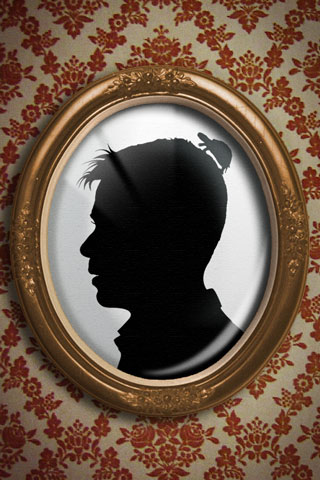By Joy Cagil
During the time I was growing up, I was surrounded by photographs and people who had a love for the camera. Since I am not a youngster, I believe this is true of most of the people who are alive during this period in history, but there was a time when people existed without cameras and they found a few other ways to capture their loved ones' likenesses. Aside from the portraits painted in oils, which cost a lot of money and took many hours of tiresome posing, silhouettes provided a lasting documentation for people's images.
Webster's dictionary defines silhouette as "a two dimensional representation of the outline of an object, as a cutout or configurational drawing, uniformly filled in with black; miniature cutout of the outlines of a famous person's face."
I first heard of silhouettes as an art form when, in a collection, I saw a young woman's silhouette painting. The outfit she was wearing was enhanced with watercolors and tiny beads. Although some of the beads had fallen off, the painting possessed a subtle but charming beauty.
A silhouette was made by making a person sit between a paper tacked to a wall and a strong light. When the sitter's shadow was cast on the paper, the artist traced it. Then, he cut it out and glued it on a board.
The history of silhouettes is a long one that dates all the way back to old Chinese dynasties. After the Renaissance, silhouette making found some fame in Europe, and during the 18th century, it became a widespread hobby when a French artist, Chrétien, invented a tracing and cutting machine. In the United States the first silhouettes surfaced during the last years of the 18th century and they were called "shades." Alongside the figures of society, several shades were made of George and Martha Washington, Benjamin Franklin, Aaron Burr and other notables.
During the next few decades, other methods of making silhouettes developed. One was to cut the outer layer of paper instead of the silhouette and to back it with a dark cloth or gold foil background. Later on, elements from the foreground were added to a silhouette by hand, such as the detail of dress and hairdo. Soon enough, groups of people, full-length figures, animals, trains and ships entered the vogue and making silhouettes were accepted as an art form.
Nowadays, silhouettes are considered among our earlier crafts. To me, they are as precious as old oil paintings. In the antiques market, silhouettes done especially by Charles Wilson Peale, an artist, and his nephew Charles Peale Polk are very valuable. If you come across a silhouette in a museum or in an antique sale, observe it carefully, because inside it, there is something of our heritage.
Joy Cagil is an author on a site for Creative Writing (http://www.Writing.Com/) Her education is in foreign languages and linguistics. In her background are varied subjects such as humanities, mental health, and visual arts. Her portfolio can be found at http://www.Writing.Com/authors/joycag
Perfect Valentines :: Tea Cosy Folk :: Santas Postbag::Halloween Mania ::Zafyna






